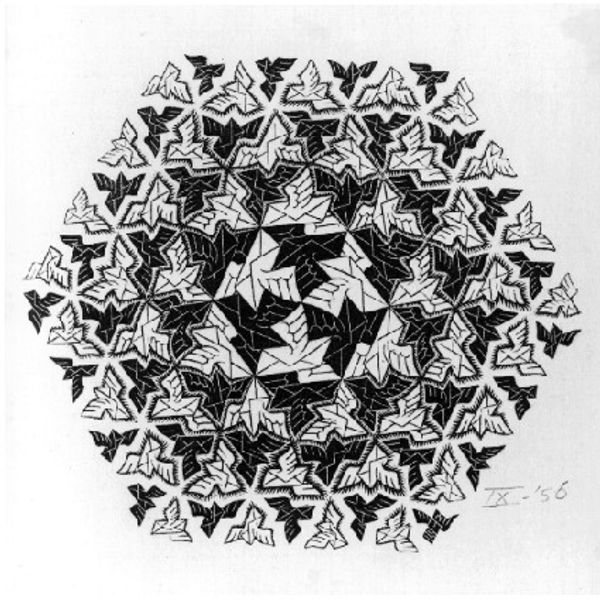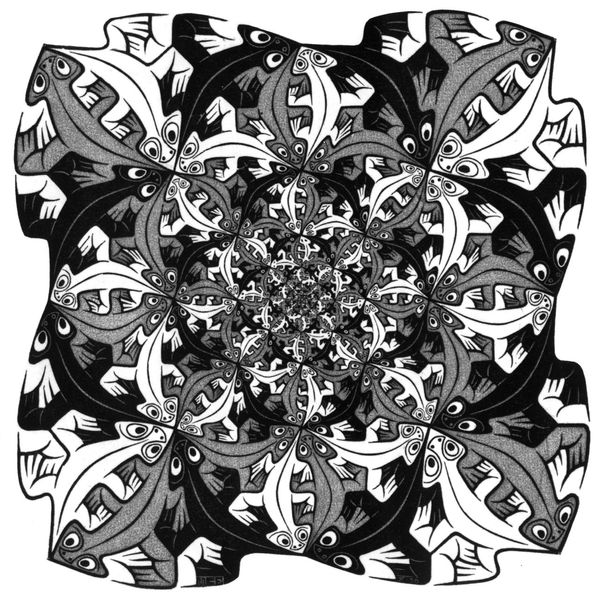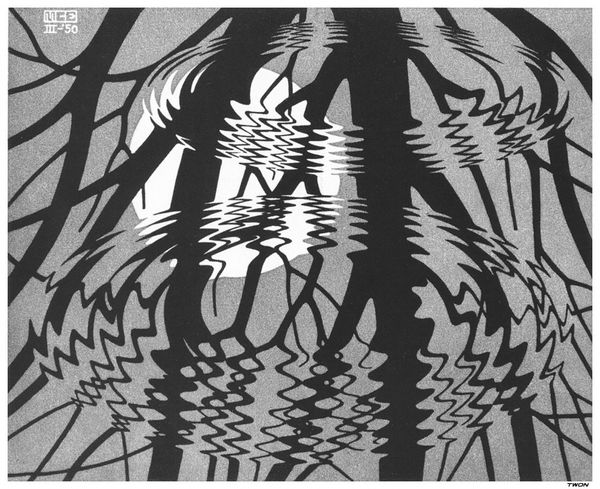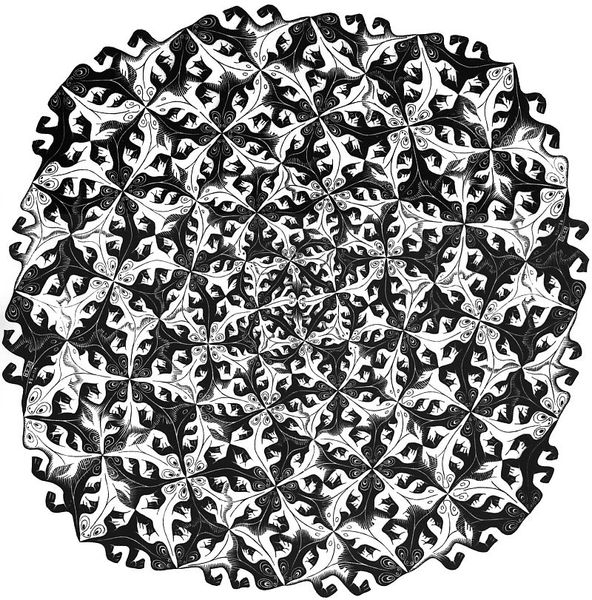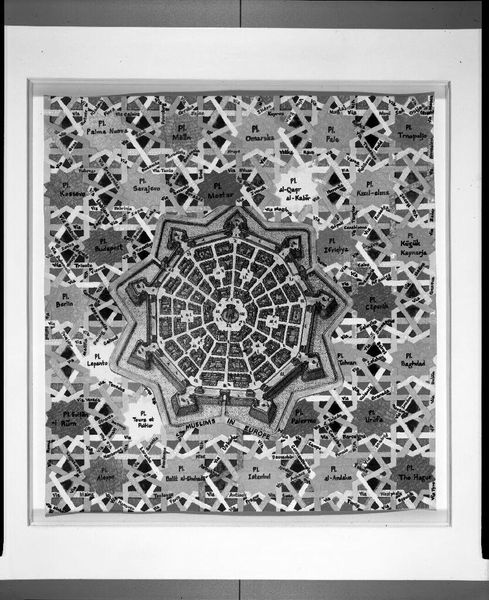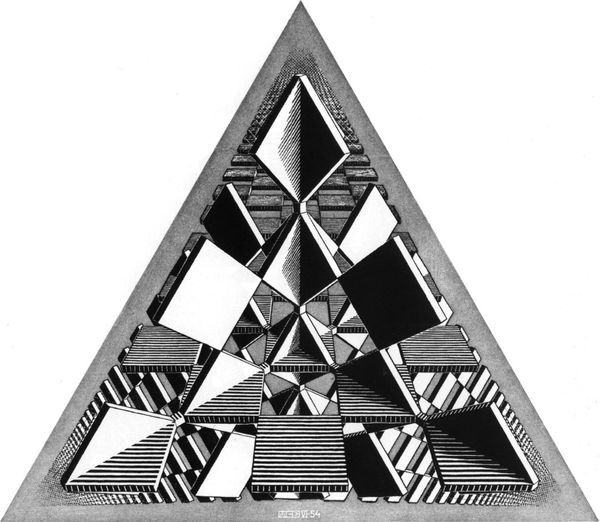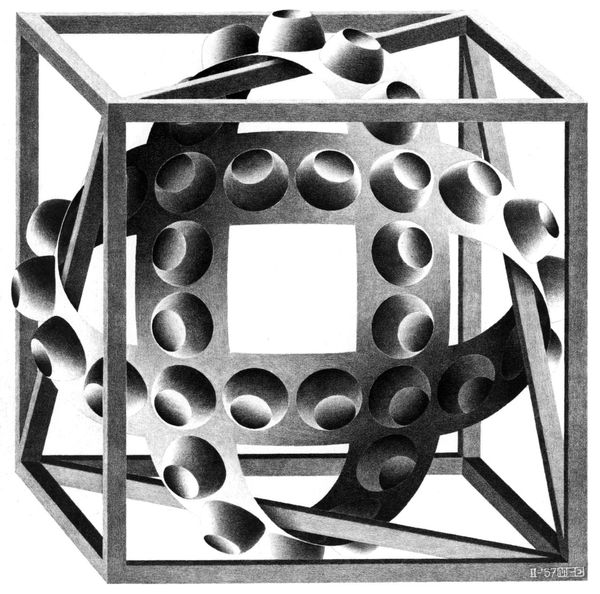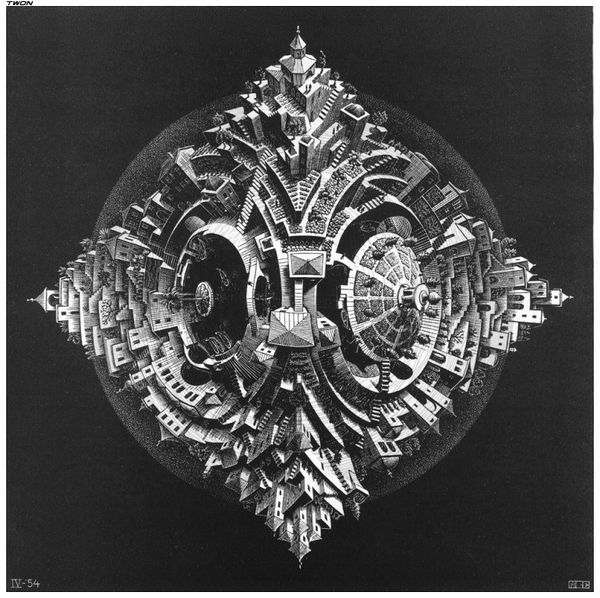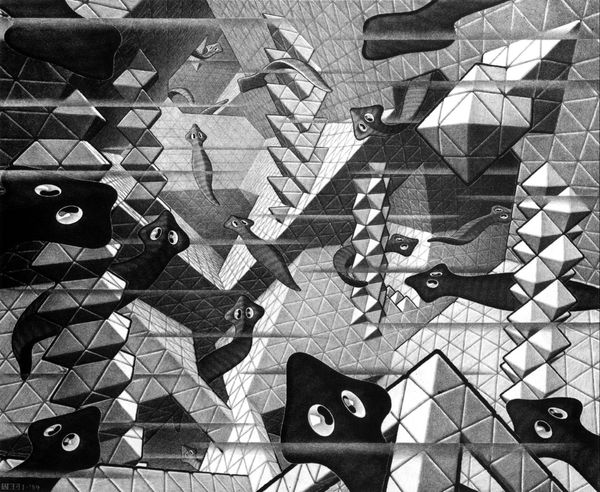
Copyright: M.C. Escher,Fair Use
Curator: What a compelling print! We're looking at M.C. Escher's "Verbum," created in 1942. Escher was a master of creating mathematically inspired art. It's fascinating to see the use of woodcut on display. What are your initial thoughts on this piece? Editor: It's like watching creation unfold, panel by panel. It certainly arrests my attention immediately. This black and white piece has this remarkable, pulsating quality to it. The cyclical evolution depicted within a contained geometric form is extremely visually alluring, even mystical. Curator: Mystical is certainly one way to view it. Escher was not religious, however this artwork demonstrates creation in a certain structured method: transitioning from the "Word," to the physical word, represented here as organisms transforming one to another. We see geometric shapes transitioning from a central point, to representations of wildlife, transitioning between frogs, fish, and then birds. Editor: Precisely! These shapes carry echoes of evolutionary and alchemical symbols. The creatures, these animals that shift and transmute, are steeped in cross cultural mythology and have symbolic significance from many traditions that goes beyond their basic representational role as mere 'animals'. Each form feels laden with accumulated meaning over time. Curator: I agree. And he very likely understood that. Consider how these metamorphoses resonated in the 1940s—a world torn by war, undergoing massive social and technological shifts. There is even a suggestion that the transformations may even highlight or embody the political zeitgeist that permeated much of European thought at the time, especially concerning Germany. Editor: Right, that makes sense in relation to "Verbum"— the power of words and how their meanings morph. Given that the imagery evolves as the word transforms outwards into the images represented in nature. Ultimately, each part flows naturally from one area of thought, into something clearly derived of that original starting place. It's truly an example of how powerful an image or symbol can become over time. Curator: Absolutely. He encapsulates grand, abstract concepts like growth and change within this mathematically perfect structure. Studying Escher always pushes one to rethink what they understand about perception, representation and our understanding of ourselves and our place in a constantly morphing world. Editor: I agree, it has been such a pleasure examining how cultural symbols never truly die; they only transform, influencing not just artistic vision, but indeed all aspects of cultural existence.
Comments
No comments
Be the first to comment and join the conversation on the ultimate creative platform.



